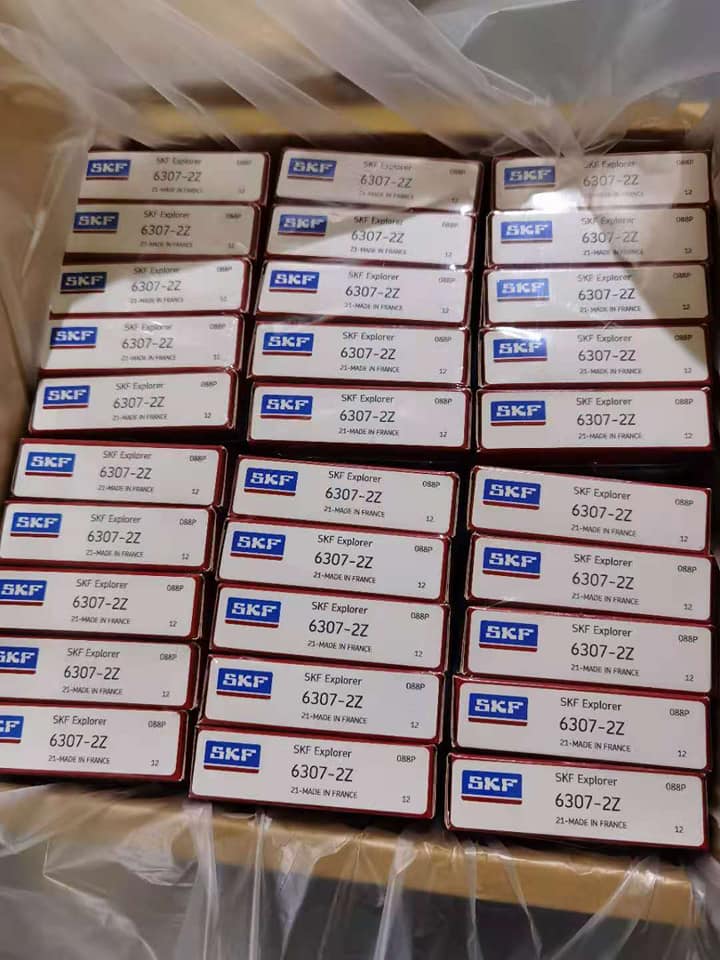
 News
NewsOverheating of the microstructure after quenching can be observed on the roughness of SKF bearing parts. But to accurately judge the degree of overheating, the microstructure must be observed. If thick acicular martensite appears in the quenched structure of GCr15 steel, it is a quenched superheated structure. The cause of formation may be the overall overheating caused by excessively high quenching heating temperature or too long heating and holding time; it may also be caused by the serious band-like carbides of the original structure, and the formation of local martensite needle-like coarseness in the low-carbon zone between the two belts. Local overheating caused by. The retained austenite in the superheated structure increases and the dimensional stability decreases. Due to the overheating of the quenched structure and the coarse steel crystals, the toughness of the parts will decrease, the impact resistance will decrease, and the life of SKF bearings will also decrease. Severe overheating may even cause quenching cracks
Low quenching temperature or poor cooling will produce troostite structure in the microstructure that exceeds the standard, called underheated structure, which reduces the hardness and the wear resistance sharply, affecting the life of SKF bearings
The cracks formed by internal stress in the quenching and cooling process of SKF bearing parts are called quenching cracks. The reasons for this kind of cracks are: because the quenching heating temperature is too high or the cooling is too rapid, the thermal stress and the structural stress of the metal mass volume change are greater than the fracture strength of the steel; the original defects of the working surface (such as surface micro cracks or scratches) Marks) or internal defects of the steel (such as slag inclusions, serious non-metallic inclusions, white spots, shrinkage residuals, etc.) that form stress concentration during quenching; severe surface decarburization and carbide segregation; insufficient tempering of parts after quenching Or not tempered in time; excessive cold punching stress caused by the previous process, forging folding, deep turning tool marks, sharp edges and corners of the oil groove, etc. In short, the cause of quenching cracks may be one or more of the above factors, and the existence of internal stress is the main reason for quenching cracks. The quenching crack is deep and slender, the fracture is straight, and the fracture surface has no oxidation color. It is often a longitudinal straight crack or annular crack on the SKF bearing ring; the shape on the SKF bearing steel ball is S-shaped, T-shaped or ring-shaped. The structural feature of quenching crack is that there is no decarburization on both sides of the crack, which is obviously different from forging crack and material crack.
Click here for more information about SKF Bearing 6307-2Z.

When SKF bearing parts are heat treated, there are thermal stress and structural stress. This internal stress can be superimposed or partially offset by each other, which is complicated and changeable, because it can vary with the heating temperature, heating speed, cooling method, cooling speed, parts The shape and size change, so heat treatment deformation is inevitable. Recognizing and mastering its changing law can make the deformation of SKF bearing parts (such as the ellipse of the ring, the size increase, etc.) placed in a controllable range, which is beneficial to the production. Of course, mechanical collisions in the heat treatment process will also cause deformation of the parts, but this deformation can be reduced and avoided by improved operations.
In the process of heat treatment of SKF bearing parts, if they are heated in an oxidizing medium, oxidation will occur on the surface to reduce the mass fraction of carbon on the surface of the parts, resulting in surface decarburization. If the depth of the surface decarburization layer exceeds the final machining allowance, the part will be scrapped. The depth of surface decarburization layer can be measured by metallographic method and microhardness method in metallographic inspection. The surface layer microhardness distribution curve measurement method shall prevail, which can be used as the arbitration criterion.
The phenomenon of insufficient partial hardness on the surface of SKF bearing parts due to insufficient heating, poor cooling, improper quenching operation, etc. is called quenching soft point. It can cause a serious decrease in surface wear resistance and fatigue strength just like surface decarburization.